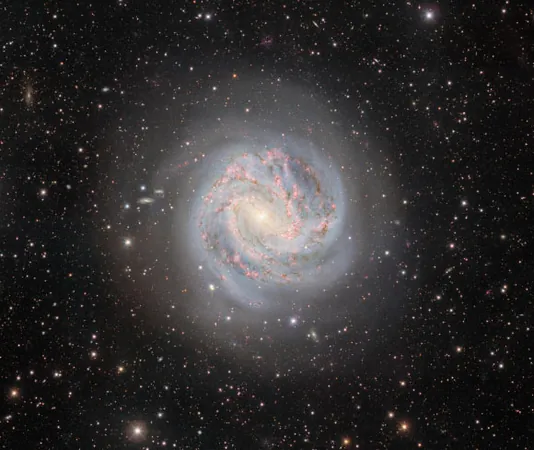
MIT Astronomers Make Groundbreaking Discovery: The Tiniest Asteroids Ever Spotted in the Main Belt!
2024-12-09
Author: Emily
MIT Astronomers Make Groundbreaking Discovery: The Tiniest Asteroids Ever Spotted in the Main Belt!
In a monumental leap for planetary science, a team of MIT researchers has unveiled a method to detect the smallest asteroids in the main asteroid belt—some as tiny as 10 meters across! This breakthrough has significant implications for our understanding of near-Earth objects and planetary defense.
To put things into perspective, the infamous asteroid that wiped out the dinosaurs was about 10 kilometers across, a colossal size that hits Earth only once every 100 to 500 million years. In stark contrast, smaller asteroids—the size of a bus—are more frequent visitors, crashing into our planet every few years. These decameter-sized space rocks can dramatically affect regions when they strike, as evidenced by historical events like the Tunguska explosion in 1908 and the Chelyabinsk meteor incident in 2013.
The main asteroid belt, located between Mars and Jupiter, is a treasure trove of these celestial bodies. Traditionally, the smallest asteroids scientists could detect were about a kilometer in diameter. However, using a revolutionary technique, MIT’s team has now identified over 100 new decameter asteroids—marking the smallest ever detected in this region.
Lead author Artem Burdanov emphasizes the importance of this discovery, stating, “We’ve developed a way to identify and track small asteroids when they’re much farther away, allowing for better orbital tracking, which is essential for planetary defense.”
The research, published in the esteemed journal *Nature*, was a collaboration among scientists from MIT, the University of Liège, Charles University in the Czech Republic, and various prestigious institutions such as the European Space Agency and Max Planck Institute for Extraterrestrial Physics in Germany.
But how did they do it? The team ingeniously repurposed data originally intended for the search for exoplanets. By employing a technique called "shift and stack," they were able to filter through images taken of distant stars to detect the faint silhouettes of asteroids, overcoming the "noise" created by other cosmic debris.
For their pioneering research, they utilized data from NASA's James Webb Space Telescope (JWST), which is notably more sensitive to infrared wavelengths. This sensitivity made it feasible to detect the faint signals of asteroids that are more visible in infrared than in light wavelengths.
The researchers processed over 10,000 images and surprisingly discovered 138 new asteroids along with eight known ones—proof that these tiny celestial objects were previously overlooked. Some of these small asteroids may eventually become near-Earth objects, prompting an urgent need for monitoring.
Miroslav Broz, a co-author, notes that understanding the statistics of these newly found asteroids will help in modeling how larger asteroids break apart, subsequently producing these smaller fragments. This research opens a new frontier in asteroid studies, offering insights into the formation and dynamics of these celestial bodies.
Burdanov concludes, "This is a totally new, unexplored space we are entering, thanks to modern technologies. It’s a classic case of discovering more by looking at the data differently, and the implications could dramatically evolve our understanding of asteroid populations."
So, could these teeny rock formations be the key to unlocking the mysteries of our solar system? One thing is certain: the excitement around this discovery continues to grow, promising a future filled with fresh revelations about our cosmic neighborhood! Stay tuned for more updates as researchers delve deeper into this intriguing area of study!









 Brasil (PT)
Brasil (PT)
 Canada (EN)
Canada (EN)
 Chile (ES)
Chile (ES)
 España (ES)
España (ES)
 France (FR)
France (FR)
 Hong Kong (EN)
Hong Kong (EN)
 Italia (IT)
Italia (IT)
 日本 (JA)
日本 (JA)
 Magyarország (HU)
Magyarország (HU)
 Norge (NO)
Norge (NO)
 Polska (PL)
Polska (PL)
 Schweiz (DE)
Schweiz (DE)
 Singapore (EN)
Singapore (EN)
 Sverige (SV)
Sverige (SV)
 Suomi (FI)
Suomi (FI)
 Türkiye (TR)
Türkiye (TR)